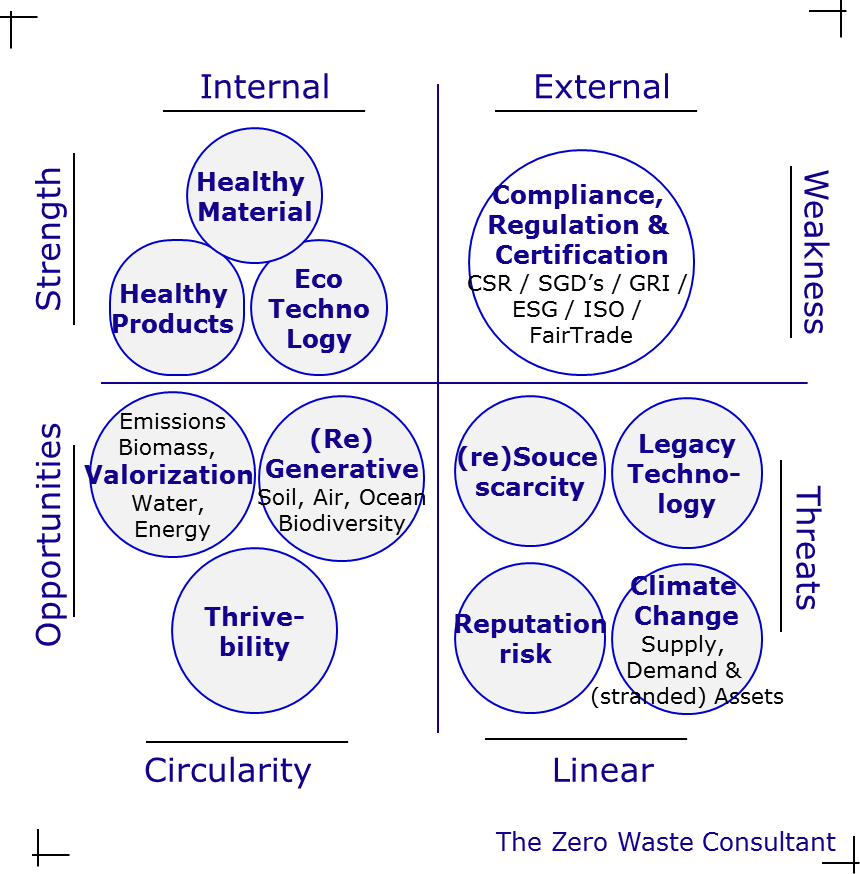Profitability Risks Assessment
This is for all business leaders who are moving towards the circular economy and are creating sustainable systemic business models. For some time now I wanted to find a way how to talk to you about the circular economy using your business acronym. Knowing many entrepreneurs have a business administration education I was in need of a suitable talking stick.
Most of you know we are in need of different business models which will help accelerate the transition and make circularity as the new normal. So I thought why not see if I can use the famous SWOT analyse to provide some clarity in our dialog. What I have done is to categorise the general weaknesses and threats within the linear economy with the strengths and opportunities circular economy can provide.
So here you find the SWOT Assessment.

The image shows, at least for me, why it makes no sense to run a business based on your weaknesses and threats. You tend to focus on resource efficiency and you are working hard to do less bad. And as such your business model tends to stay linear.
So what happens when you operate from your inner strengths and opportunities?
Interesting enough thinking in business opportunities always increases your innovative (circular) thinking. This helps to turn your problems into business opportunities. It will create more return on your investment, eg more cash flows. And as such you are increasing you resource effectiveness and lowering your unit costs. So what is there not to like?
The 6 innovation drivers, which are divided equally between the quadrants Strength and Opportunities, are:
The strength quadrant |
You work with healthy materials which are assembled into healthy products, which in return are produced by healthy technologies, because you understand the trickledown effect it has for the opportunity part you seek.
The opportunity quadrant |
All your outputs flows of matter are valorised and cascaded into new products. This aids you in securing your access to the current and future (re)sources for profitable sake. And in return this innovation strategy lets your company thrive into the unknown future. And your thriveability will also infect those in your whole value chain inspiring your suppliers to follow your lead. The benefit of these actions is it stimulates systems thinking and flexibility to adapt.
To conclude:
These actions will help increase your cash flows including those of your network partners. And interesting enough the cascading effect will also help you to achieve lower unit cost. This is because you have are able to purchase cheaper materials from your value chain and your wasted flow of matters become products you can sell. And these wasted flows of matter are now also erased from your balance sheet.
So it seems applying a SWOT analyses to your weaknesses, threats, strengths and opportunities creates a systemic business improvement roadmap. The transition requires moving away from core business thinking towards multiple cash flow business thinking. You become more resilient to external threats becomes your innovative capacity is adaptive to change. And even more interesting your company becomes fully compliant to any regulation or certification system, simply because you are already outperforming any existing system.
So it seems to be a simple construct, curious to hear your thoughts.
Alexander


